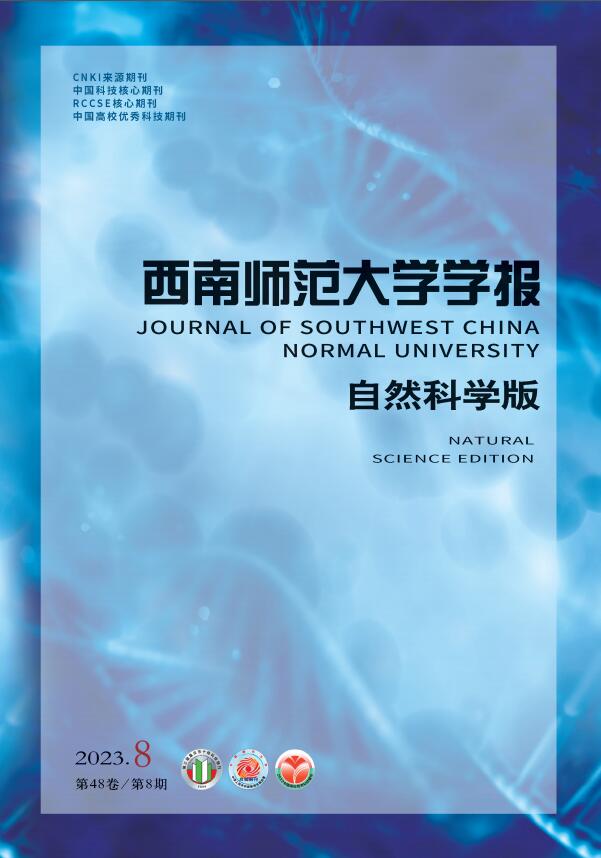-
20世纪60年代,华罗庚和万哲先提出辛群和辛矩阵的概念[1]. 之后,文献[2-4]利用次转置提出了次辛矩阵和共轭次辛矩阵的概念. 目前,辛矩阵广泛应用在电感电路理论、热声分布参数网络模型、现代几何学等方面,例如:文献[5]结合全参数辛矩阵构建了饲料物流企业竞争力评价模型;文献[6]在李群机器学习的基础上,研究其中的辛群分类器设计方法;文献[7]提出小参数摄动法保辛的问题;文献[8]对热声分布参数网络模型的传输矩阵进行了辛对称分析,提出了降低最小网络损耗的方法.
矩阵方程AX=B具有广泛的实际应用背景,它在图像修复与系统控制等领域有着广泛应用,在实数域和复数域上对该方程的各种求解方法也存在较多的研究成果[9-14]. 本文在四元数体上研究矩阵方程
的共轭次辛逼近解问题,其中A,B∈
$\mathbb{Q}$ l×2n是已知矩阵,X∈$\mathbb{Q}$ 2n×2n是未知矩阵.记AT,AST,A,A*,A(*),A+分别表示A的转置、次转置、共轭、共轭转置、共轭次转置矩阵和Moore-Penrose广义逆. A⊗B表示矩阵A与B的Kronecker积. vec(A),‖A‖=
$\sqrt{\text{tr}\left({{\mathrm{A}}^{*}}\mathrm{A} \right)}$ 分别表示矩阵A按列顺序拉直向量及其Frobenius范数. 记标准辛矩阵为[1]其中In表示n阶单位矩阵. 易知K2=-I2n,K-1=KT=-K. 下面给出有关定义和引理.
定义1 [15] 设A=[aij]∈
$\mathbb{Q}$ m×n,则称是A的次转置,即AST=[an-j+1,m-i+1]∈
$\mathbb{Q}$ n×m,i=1,2,…,m,j=1,2,…,n. 因此,A(*)=AST.定义2 设S∈
$\mathbb{Q}$ 2n×2n,K是2n阶标准辛矩阵,如果S满足S(*)KS=K,则称S为四元数共轭次辛矩阵.$\mathbb{Q}$ 上全体2n阶共轭次辛矩阵表示为SQ2n.显然,四元数共轭次辛矩阵的概念是文献[2-4]中实数域上次辛矩阵和复数域上共轭次辛矩阵定义的推广. 例如
满足S1(*)KS1=K,因此,S1∈SQ4.
引理1 [16] 四元数矩阵方程AX=B有解等价于AA+B=B. 在此情况下,矩阵方程AX=B的一般解和最小二乘解集均为
其中Y是相应阶数的任意矩阵,且
$\tilde{\boldsymbol{X}}=\boldsymbol{A}^{+} \boldsymbol{B}$ 是唯一的极小范数最小二乘解.引理2 设A=[aij]m×n∈
$\mathbb{Q}$ m×n,则其中Jn和Jm是次对角线元全为1,其余元全为0的方阵,且Jn-1=Jn,Jm-1=Jm.
证 由定义1可得
因此
证毕.
具体地,讨论如下2个问题:
问题1 给定A∈
$\mathbb{Q}$ l×2n,B∈$\mathbb{Q}$ l×2n,求共轭次辛矩阵X∈$\mathbb{Q}$ 2n×2n,使得AX=B.问题2 设问题1中共轭次辛矩阵的解集SE≠Ø,N∈
$\mathbb{Q}$ 2n×2n是已知四元数共轭次辛矩阵,求矩阵$\widetilde{\mathrm{X}}$ ∈SE,满足$\min\limits _{X \in S_{E}}\|\boldsymbol{X}-\boldsymbol{N}\|=\|\tilde{\boldsymbol{X}}-\boldsymbol{N}\|$ .
HTML
-
设X∈SQ2n,由于X(*)KX=K,因此有
又由引理2,可知
其中J2n是次对角线元全为1,其余元全为0的2n×2n的方阵.
对(1)式两边同时取共轭转置,得
将(3)式代入(4)式中,得
再将(2)式代入(5)式中,得
移项整理并化简,并由J2n-1=J2n,K-1=-K,得
记
则(6)式等价于XC=D. 因此,四元数矩阵方程(1)存在共轭次辛矩阵解等价于下列四元数矩阵方程组有解
设X∈SQ2n,它在实数域
$\mathbb{R}$ 上的分解式为其中Xm∈
$\mathbb{R}$ 2n×2n(m=0,1,2,3). 又设A,B∈$\mathbb{Q}$ l×2n,C,D∈$\mathbb{Q}$ 2n×l的实分解式为这里Ai,Bi∈
$\mathbb{R}$ l×2n,Ci,Di∈$\mathbb{R}$ 2n×l (i=0,1,2,3),则四元数矩阵方程组(8)等价于将(9)式左边展开,并根据四元数矩阵实分解的唯一性,可得
记
于是方程组(8)可写成
其中v∈
$\mathbb{R}$ 16n2×1. 基于以上讨论,对于问题1的解有如下结果.定理1 已知四元数矩阵A,B∈
$ \mathbb{Q}$ l×2n,则四元数矩阵方程(1)存在四元数共轭次辛矩阵解的充要条件是有解时,它的共轭次辛矩阵解为
其中
这里G∈
$\mathbb{R}$ 16nl×16n2,L∈$\mathbb{R}$ 16nl×1如(10)式所示,v(1:4n2)表示由向量的第1至4n2个元素组成的4n2维列向量.证 由方程组(8)及引理1可得,(1)式存在四元数共轭次辛矩阵解等价于方程组(8)有解也等价于GG+L=L有解,(1)式的共轭次辛矩阵解显然由(11)式给出. 证毕.
-
设问题1的解集SE≠Ø,N∈
$\mathbb{Q}$ 2n×2n是已知的共轭次辛矩阵,现将N作实分解其中Ni∈
$\mathbb{R}$ 2n×2n(i=0,1,2,3). 记则当X∈SE时,由定理1有
于是,关于问题2的解,我们有如下结果:
定理2 设问题1的解集SE≠Ø,给定四元数共轭次辛矩阵N∈
$\mathbb{Q}$ 2n×2n,则在SE中使得‖X-N‖取最小值的解$\widetilde{\mathrm{X}}$ 存在,且表示为其中
这里的符号意义与定理1所示相同.
证 当X∈SE时,根据定理1及(13)式可知
当G+G≠I时,由引理1,上式关于Y的最小二乘解为
当G+G=I时,(1)式存在唯一解
$\widetilde{\boldsymbol{v}}$ =G+L,因此不论哪种情况均有因此,存在
$\widetilde{\mathrm{X}}$ ∈SE使得‖X-N‖取最小值成立,且$\widetilde{\mathrm{X}}$ 表示为(14)式. 证明完毕.
-
算例1 给定下列四元数矩阵
试讨论四元数矩阵方程AX=B的共轭次辛矩阵解的存在性.
解 四元数矩阵A,B的实分解矩阵分别为
由KJ4B*=C,KJ4A*=D,得
则四元数矩阵C,D的实分解式为
按(10)式写出实矩阵G和实向量L,并直接计算可知GG+L=L,因此,根据定理1,所给的四元数矩阵方程AX=B存在共轭次辛矩阵解X,且由公式(11)可得它的一般解为
算例2 在辛矩阵和四阶微分算子自共轭边界条件的基本型中[17],已知
其中r1,r2∈
$\mathbb{R}$ ,a∈$\mathbb{Q}$ ,则存在共轭次辛矩阵K1,使得其中
-
本文提出四元数矩阵方程AX=B何时存在共轭次辛结构解的判定与求解问题. 主要利用共轭转置矩阵和共轭次转置矩阵的关联性,以及四元数矩阵的实分解和矩阵的Kronecker积,克服了四元数乘法非交换所带来的困难,同时将结构方程转化为无约束方程,从而得到原方程具有共轭次辛结构解的充要条件以及解的表达式. 在该方程的解集SE≠Ø条件下,利用矩阵Frobenius范数性质,在SE中找到与给定共轭次辛矩阵N的最佳逼近解. 所得结果拓广了四元数矩阵方程新结构解的处理技巧与方法.






 DownLoad:
DownLoad: